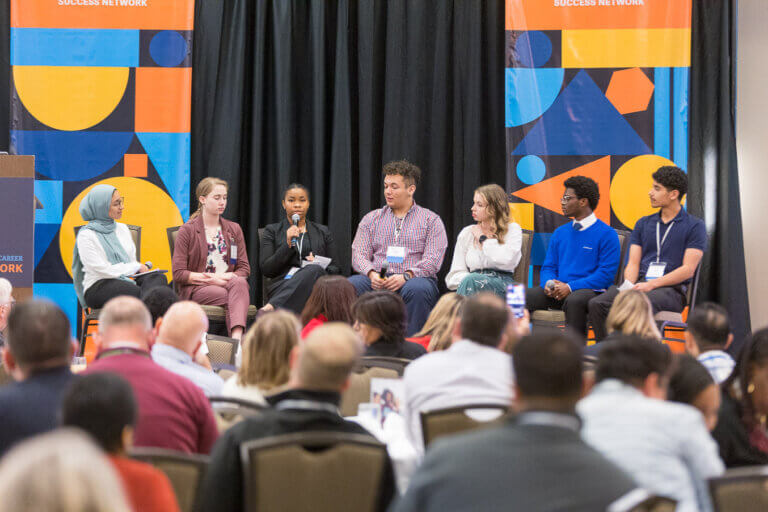“Preparing students for ‘what’s next’ has always been the goal of educators.”
There is often a disconnect between what students learn in the classroom and what employers expect young people to know in the workplace, which has an impact on how courses are planned, decisions are made about what to do after high school, and the hiring choices an employer makes.
In 2016, Illinois took a bold step to address this disconnect. The Postsecondary and Workforce Readiness (PWR) Act, signed into law in 2016, takes a student-centered and competency-based approach to helping students achieve college and career readiness. The PWR Act identified four truly ambitious components to improve the alignment and transition from high school to—and through—college and into careers. One of those components is the College and Career Pathway Endorsements, which provides an innovative way for school districts to validate the hard work of students preparing for life after high school. Endorsements will be added to a student’s high school diploma and will reflect that a student is ready for entry-level work in a particular industry area and is ready for postsecondary academic work.
College and Career Pathway Endorsements includes the following elements:
- The completion of an individualized learning plan
- Career-focused instructional sequence: 2 years of coursework or equivalent competencies
- Professional learning, including career exploration, career development experiences, and team-based challenges
- The demonstration of readiness in reading and math for postsecondary education pathway courses
Together, the components of the endorsement provide a structure for career awareness, exploration, and preparation.
The endorsement system is voluntary for school districts, but the Illinois State Board of Education has made a powerful move to elevate the program by incorporating it into its Every Student Succeeds Act (ESSA) College and Career Readiness Indicator, as a way for substantially meeting all of the Indicators requirements. Currently, 16 Illinois communities—including over 90 high schools—are planning to start the implementation of endorsement systems in the coming year and are supported by EdSystems and the Illinois 60 by 25 Network to plan and prepare for these endorsements as communities. The number of schools is certain to increase as ESSA is put into effect and more communities recognize the endorsement system as a useful structure for facilitating collaboration between school districts, local community colleges, and employers. Endorsements can also help communities plan pathway courses, industry credentials, and opportunities for professional learning.
Reinforcing a Local School District’s Initiative
Almost 10 years ago, the Belvidere School District saw a real disconnect between grades that students received and the mastery of the skills associated with those grades. The District began a process to unpack the standards associated with each class, identifying criteria for learning. This led to the development of Proficiency Scales which create a much more personalized approach to grading, allowing teachers to communicate with students more directly about skills attainment.
The College and Career Pathway Endorsements system provided a very exciting next step for the District to connect the local work they are doing to the efforts of other communities across Illinois.
“Preparing students for ‘what’s next’ has always been the goal of educators. The endorsement framework provides us with a structure to do that, and the competencies developed by employers through the work of EdSystems and others ensure what we are teaching is aligned to the current needs of industry.”
Nik Butenhoff, Director of Career Readiness, Belvidere School District 100
Why are Competencies Important and Innovative?
Competencies are powerful tools in providing employers and educators with a common language for addressing what skills students need to know what be able to do. Through an exciting and innovative competency mapping process where educators, industry leaders, and state agencies are working together to determine the competencies, school districts will have access to reverse-engineered, research-driven, and industry-validated competencies that will help shape various components of the endorsements. Through the PWR Act—and now the state’s ESSA plan—Illinois has a vision for a student-centered system of college and career pathways resulting from the collaboration between educators and employers so that all students will develop technical and essential employability skills, earn in-demand credentials, and launch rewarding careers.


